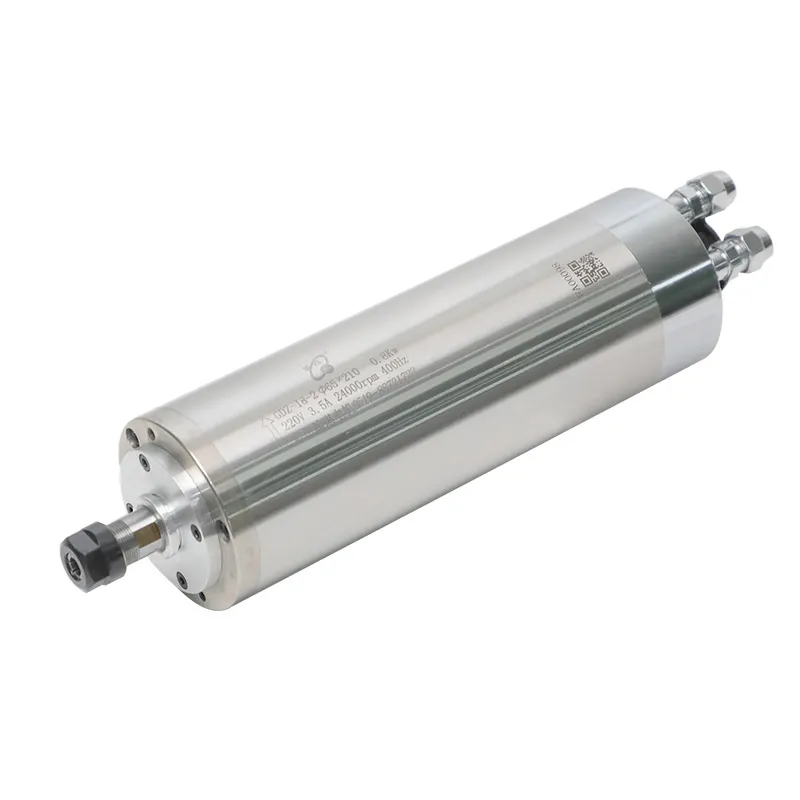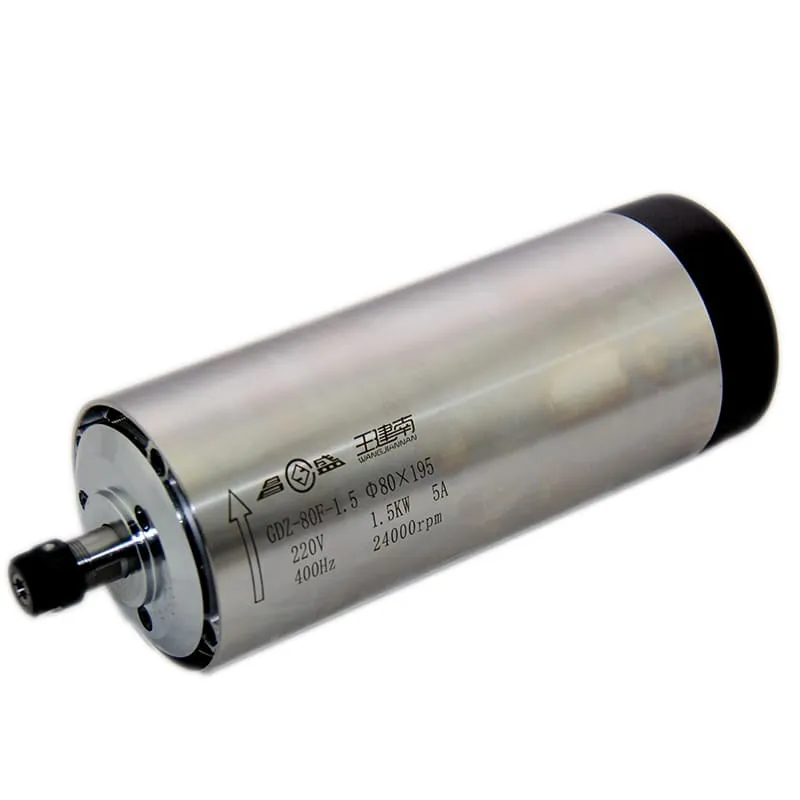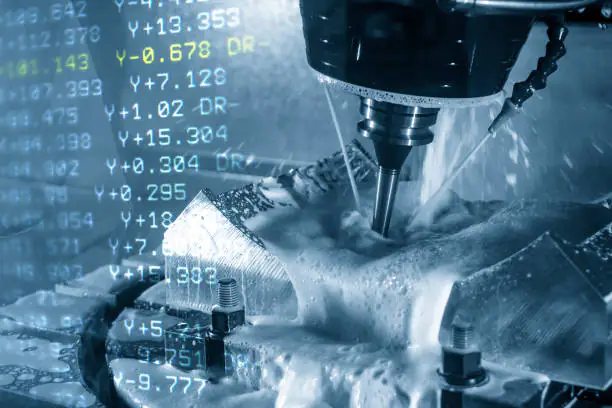CNC machines have transformed the world of manufacturing, making it possible to create complex parts with high precision and repeatability. If you’re new to the world of CNC machining, learning to operate a CNC machine might feel daunting at first. However, with the right steps and knowledge, you can gain confidence in using these powerful tools effectively. This comprehensive guide will walk you through the steps to operate a CNC machine safely and efficiently, covering everything from setting up the machine to running a CNC program and adjusting offsets.
What is a CNC Machine?
A CNC machine—which stands for Computer Numerical Control machine—is an automated device that produces parts by precisely cutting, drilling, milling, or shaping materials using a program known as G-code. CNC technology allows operators to achieve incredible precision while reducing human error, making CNC machines essential for industries such as automotive, aerospace, and manufacturing.
Components of a CNC Machine
To better understand how to operate a CNC machine, it is crucial to know the primary components that make up the machine:
- Control Panel: Where the operator inputs commands and controls the machine.
- Spindle: The part that rotates the tool to perform cutting or drilling.
- Machine Bed: The area where the material (workpiece) is secured during machining.
- Tool Changer: Stores multiple tools and automatically changes them as needed during a machining cycle.
- Motors and Drives: Provide movement along the X, Y, and Z axes.
Each component plays a critical role in the successful operation of the machine. Let’s explore how you can get started with operating a CNC machine.
Step 1: Safety Precautions and Preparation
1.1 Safety First
Safety is paramount when working with CNC machines. Here are key safety precautions you should take:
- Wear Personal Protective Equipment (PPE): Safety glasses, gloves, and ear protection are essential when operating a CNC machine.
- Know the Emergency Stop Button: Ensure you understand how to activate the emergency stop button to halt operations immediately if needed.
- Secure Loose Clothing and Hair: Loose clothing, hair, and jewelry can get caught in the machinery.
1.2 Preparation of the Work Area
- Clean the Workspace: Ensure the area around the machine is free from clutter.
- Check Coolant Levels: If the CNC machine uses coolant, verify that there is enough for the machining operation.
- Tool Check: Ensure that the correct tools are loaded into the tool changer and are in good condition.
Step 2: Loading the CNC Program
2.1 Writing or Loading a CNC Program
A CNC program is a series of instructions written in G-code that directs the machine on how to move and what actions to take.
- Write the Program: You can use software like Fusion 360 or Mastercam to write and simulate your program.
- Load the Program: The program is typically loaded into the CNC machine via USB, network, or directly from a computer using a connection cable.
2.2 Understanding G-Code
G-code is the language CNC machines understand, specifying where and how the machine should move. Key G-codes include:
- G00: Rapid movement to a specified location.
- G01: Linear feed, where the tool moves in a straight line at a controlled speed.
- G02/G03: Clockwise and counterclockwise circular interpolation.
Knowing how to read and modify G-code helps when adjustments are needed during a machining process.
Step 3: Setting Up the Machine
3.1 Setting Tool Length Offsets
Setting tool length offsets ensures that the CNC machine knows the exact position of the tool relative to the workpiece.
- Use a Tool Presetter: Many machines come equipped with a tool presetter, which measures each tool’s length and automatically inputs it into the control system.
- Manual Measurement: For machines without automatic measurement, use a piece of paper to measure the distance between the tool tip and the workpiece until you feel a slight drag. Enter this value as the tool offset.
3.2 Setting Work Offsets
The work offset tells the CNC machine the position of the workpiece on the machine bed.
- Work Coordinate System (WCS): Set the WCS (usually G54-G59) to establish the part’s zero point. The zero point is often set at the corner or center of the workpiece.
- Probe Method: You can use a touch probe to accurately find the edges of the workpiece and set the work offsets.
Step 4: Running the CNC Machine
4.1 Dry Run or Trial Run
Before cutting the actual part, it is essential to conduct a dry run to ensure the program works correctly and that there will be no collisions.
- Simulation Mode: Run the machine without engaging the spindle to check for any unexpected tool paths or potential collisions.
- Adjustments: Make necessary changes to the G-code if any issues are detected during the trial run.
4.2 Cutting the Material
Once you are confident that the program is correct, you can start the actual machining process:
- Engage Spindle: Start the spindle and set it to the desired RPM. Consider using a water-cooled spindle like the 24000RPM 0.8KW ER11 Water-Cooled Spindle for operations that require high precision.

- Feed Rate: Set the feed rate as per the material and tooling specifications.
- Monitor the Process: Keep an eye on the process to ensure everything runs smoothly. Listen for unusual noises that could indicate tool wear or improper cutting conditions.
Step 5: Adjusting During Machining
5.1 Adjusting Tool Offsets
As the tool wears down, you may need to adjust the tool offsets to maintain accuracy.
- Measure Cut Parts: Use calipers or a micrometer to measure critical dimensions and adjust offsets accordingly to achieve the desired tolerances.
- Tool Wear Compensation: If the part dimensions begin to drift due to tool wear, input a wear offset to compensate without rewriting the entire program.
5.2 Changing Tools
If multiple tools are required during the machining operation, the tool changer will automatically switch tools based on the CNC program’s instructions. If you need to manually change tools, ensure the spindle is turned off and the machine is in a safe state.
Step 6: Quality Control and Finishing
6.1 Quality Control
Once machining is complete, it’s important to verify that the part meets the required specifications:
- Dimensional Inspection: Use measuring tools like calipers, micrometers, or a coordinate measuring machine (CMM) to verify critical dimensions.
- Surface Finish: Inspect the surface finish to ensure it meets the requirements. If necessary, run a finishing pass to improve the surface quality.
6.2 Deburring and Cleaning
- Deburring Tools: Use a deburring tool to remove sharp edges or burrs.
- Clean the Work Area: Clear away chips and coolant from the machine bed. Proper cleaning ensures that the next operation starts smoothly and reduces machine wear.
CNC Machine Maintenance Tips
To keep your CNC machine running efficiently and prevent unexpected downtimes, regular maintenance is key:
- Lubrication: Regularly lubricate the linear rails and ball screws to keep the motion smooth.
- Spindle Maintenance: Ensure that the spindle is in good condition by checking for runout or any unusual noise. For high-quality spindles, you might consider the 2.2KW ER20 Air-Cooled Spindle for its durability and performance.

- Coolant Check: Always check the coolant levels and ensure the system is clean to avoid overheating during machining.
Frequently Asked Questions About Operating CNC Machines
1. What safety measures are essential when operating a CNC machine?
Safety measures include wearing personal protective equipment (PPE), understanding how to use the emergency stop button, and securing loose clothing and hair to prevent accidents.
2. How do I load a CNC program into the machine?
You can load a CNC program using a USB, network connection, or directly from a computer connected to the CNC machine.
3. What is a dry run in CNC machining?
A dry run is a test where the CNC machine runs the program without cutting material to verify that the toolpaths are correct and that there are no collisions.
4. How do I set the work offset on a CNC machine?
You can set the work offset by using a probe to find the edges of the workpiece or by manually moving the tool to the zero point and entering the coordinates.
5. What should I do if my part dimensions are incorrect?
If part dimensions are incorrect, check the tool offsets and wear compensation values. Measure the part, adjust offsets, and rerun the program if necessary.
Conclusion
Operating a CNC machine may seem complex at first, but by following these steps—ranging from preparing your work environment to programming and quality control—you can run your CNC operations smoothly and confidently. Safety, preparation, and careful adjustments are key to successfully machining high-quality parts. The right tools, such as reliable spindles, can make a significant difference in performance and accuracy.
If you’re looking to upgrade your CNC machine or add new capabilities, consider visiting Spindle Motor Shop for high-quality spindle options like the 1.5KW ER11 Round Air-Cooled Spindle.  Equip your machine with the best components to achieve precision and productivity in all your CNC projects.
Equip your machine with the best components to achieve precision and productivity in all your CNC projects.

